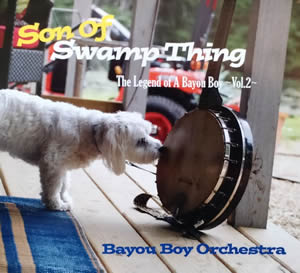 John Stein’s latest recording Watershed reflects the strong chemistry between he and his combo. The listener can hear on every track how well the musicians gel and how well they inspire each other to greater heights. With an assortment of breezy tune and of assertive tunes, we can hear the subtle interplay whether they deliver with gentleness or with an edge. Recorded and engineered at Soundfinger productions in Sao Paulo, Brazil, mixed at Stable Sound Studio in Portsmouth, Rhode Island, with additional mastering at Bongo Beach Productions in Westport, Massachusetts, Watershed feels like it was built up over time by men in different lands, each keeping this combo’s sound as pure as humanly possible.
John Stein’s latest recording Watershed reflects the strong chemistry between he and his combo. The listener can hear on every track how well the musicians gel and how well they inspire each other to greater heights. With an assortment of breezy tune and of assertive tunes, we can hear the subtle interplay whether they deliver with gentleness or with an edge. Recorded and engineered at Soundfinger productions in Sao Paulo, Brazil, mixed at Stable Sound Studio in Portsmouth, Rhode Island, with additional mastering at Bongo Beach Productions in Westport, Massachusetts, Watershed feels like it was built up over time by men in different lands, each keeping this combo’s sound as pure as humanly possible.
Opening track “Rio Escuro” finds Stein gently picking his tuneful melody as flautist Teco Cardoso breezes through an equally lovely melody line. Keyboardist Daniel Grajew gingerly taps out an additional layer of tasteful notes, all on a down low push. All three of these upper register players swing their lines around a persistent nudge from drummer Ze Eduardo Nazario’s brush work as well as Frank Herzberg’s steady pull of low end notes.
“Kobe” moves at a brisker pace. Here, the instrumentalist are unfurling a tapestry as wide as it is fast. Keyboardist Grajew taps out his melody line so swiftly and so heavily accented that he takes one through his cascade of notes like an escape artist fleeing through the night. Guitarist Stein picks his high pitched notes at a pace that gives us a moment to appreciate the shine of each as he keeps it moving with the same breathless exuberance of drummer Nazarios furious fills and rolls.
Moving onto an arrangement of “A Taste Of Honey,” these players find themselves enjoying a sprawl of gentle notes and of subtle interaction. Stein’s sensitive playing shows respect for the notes in the original composition while finessing something with his own emotive display of the feelings this piece builds into Keys perk with a sophisticated tuft of colorful, dancing notes, notes that appear with the slyness of a fox. Low end notes from Herzberg create a nudge of their own, something pushing up from beneath to keep everything above slyly moving in a firm direction. The way these players respectfully nudge each other in the right directions makes for one of their key strengths.
“Brazilian Hug” allows Stein the breathing room to get very expressive on his guitar. He presses out a tender melody and he struts it. Playing over a Latin groove from his rhythm section, Stein moves it around with a funky finesse. He eventually makes room for a lively excursion from the keyboards and rhythm section. Beginning as a layer of funky keyboards, the keys eventually take the spotlight, its notes becoming sharper, more accented. Worked into a dance between keys, bass, and drums, this piece captures the emotion and the promise of its title.
“Mystified” might be the most eloquent of Stein’s compositions on this album. His guitar work here conveys a mood not just with its tone and its melody. It also speaks volumes with the way he accents the notes in just the right places to create a soothing sensation in his melody line. He receives perfect accompaniment from the easeful run of piano notes that glitter alongside his line. Herzberg plucks yet a third line of allure with subtle shifts in his knobby low end phrase. He steers from the rear rudder of this piece as he adds another dimension to the colors and tones that make this one such a pleasant ride.
“Wally” swings with energy, wideness, brightness. Every player gets his turn to play their take on this upbeat work. Keys tap dance with eloquent zeal. Guitar notes get pressed out in joyful expression. The rhythm section keeps the groove pulpy thick and persistently percussive, quite percussive. Piano notes and drum notes tumble in a brilliant cycle before they spread their rhythmic flare even further. This one is filled with a motion that begins with its groove, a groove that allows every instrument a chance to go around with an entertaining, energetic bounce.
Coming in with a brassy horn, Joe Henderson‘s “The Kicker” follows a mellifluous line. Cardoso, this time on alto saxophone, wails his way through each meter with a fine assertive charge. It’s impossible not to admire his never ending series of daring notes, a daredevil for making his melody dive, jump, and bop in any direction he chooses. Soon, Stein jumps into action with a thinner, sweeter take on the melody. That works as a breather before the electric piano melody races in with a card shuffle speed of bouncy notes. It segues into a drum solo that showcases the audacity of speed and finesse needed to follow the previous dazzle of the upper registers.
A rendition of Jim Hall‘s “Waltz New” finds the boys nudging this quaint ditty along within a tight framework. The combo are really listening to each other as not one can move off course to keep this one as tightly wound as it is. Low end knobby notes dance down the line played by Stein on his electric. We hear the high notes and low notes practically holding hands like a polite date. A light push from the drum kit enmeshes it all in a tight framework of compressed coolness, a hipsters delight served up in one crispy fun bar snack.
An arrangement of Pat Martino’s “Cisco” plays out down tempo, cool, Stein’s guitar notes riding along a gentle melody line, a line that soothes the ear and soul as it nimbly dances along his fretboard. Keys take over, and, accent the same melody line with flinty tinkles, elegant notes that ripple prettily, like a stream getting hit by spots of sunlight through trees. Hip low end notes nudge the tune into deeper coolness as sticks and cymbals offer plenty more reason to like this piece.
Composed by Henri Mancini and a few others, “Dreamsville” plays out as its title suggests. Light touches of guitar, sensitive brush work, and a soothing crawl of keyboards make this one as bright, warm, and dreamy as a slow summer day. One can picture the band members making careful eye contact with one another and sensing each other in the tune. They are in perfect sync as they keep this work full of nice, subtle touches while holding it in mellow mood heaven.
“Charlotte” delights as at begins with its bright, sunny saxophone as well as a weave of guitar, sticks, keys, and bass beneath it. Eventually, the keys take over the melody line. Yet, that 1920s jazz inspired line comes back in with its own sweet candy sound. The guitar takes a turn too then dances with that ever so pleasant soprano sax line. In earlier time the line would have been played on a clarinet, and it does seem rooted in what clarinet players were doing in early 20th century jazz.
Closing track “The Hang” fuses acid jazz with 1950s bebop to capture the rapturous urgency of people entering and or leaving a hangout. Each assertive drum smack makes on feel the race to get indoors. Each swiftly plucked bass note parallels with chugging motorization. Speedy guitar and keyboard make the melodic line feel like it is sputtering out of control as it actually connotes the racing thoughts of a hang patron deciding what to do next in a rush of activity.
John Stein and his music partners in crime conspired to come up with Watershed, a tasteful variety of engaging styles released by Whaling City Sounds in New Bedford, Massachusetts. It would be a crime for any New England jazz fan to not give it a spin. Whether low key, driving, hip, or mellowing down easy, John Stein and his known associates offer a jazz album that can easily serve as the soundtrack for many human activities. Bravo.

